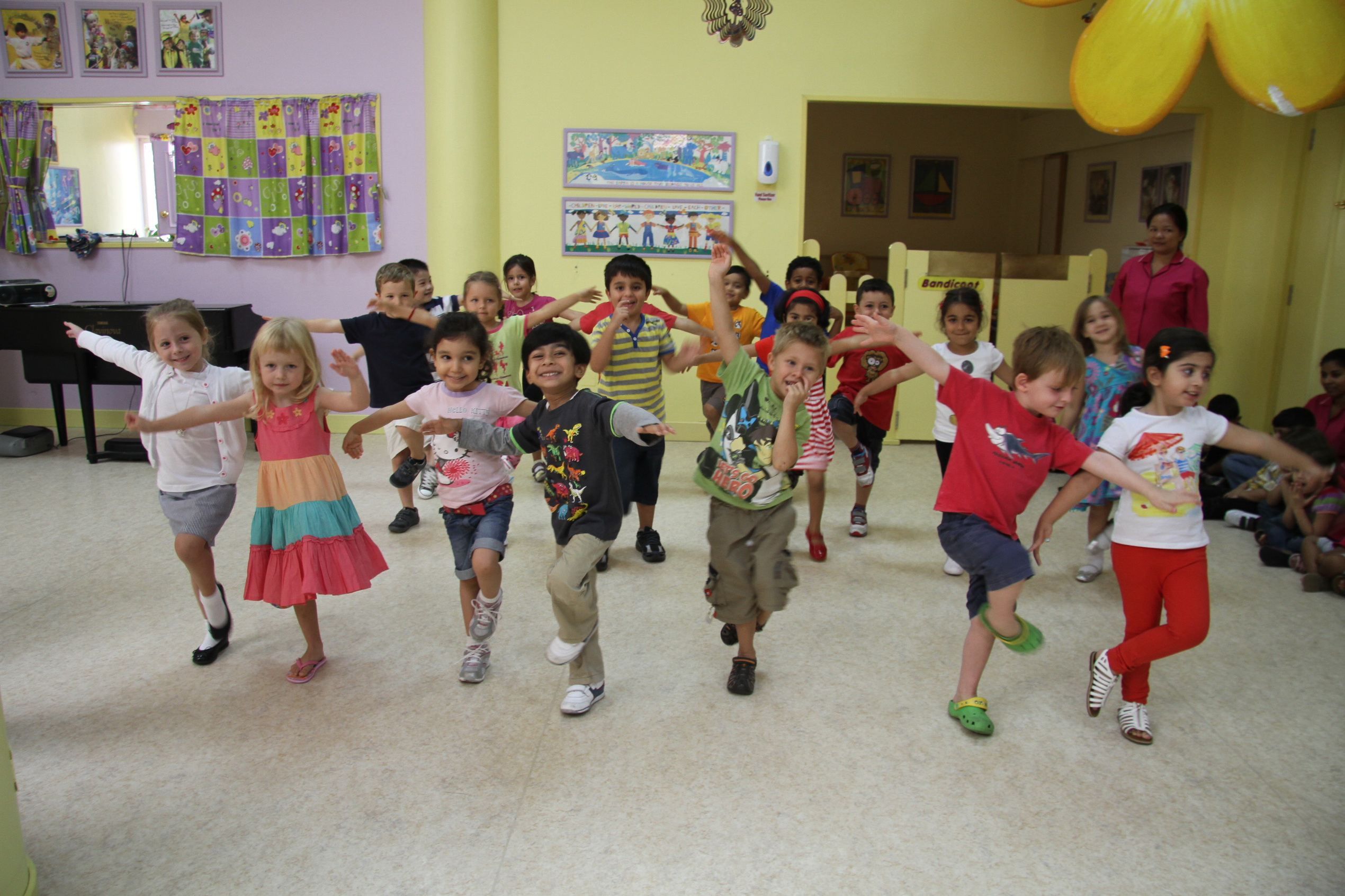Music, movement and art are a vital part of your child’s creative educational growth. Experiences with the Arts support your child’s innate desire to create, build on his natural curiosity, and open avenues for self-expression and learning in all curriculum areas. Recent studies support the importance of the Arts in brain development. Activities with music, instruments, sound, rhythm and dance build memory, attention span, motor and abstract reasoning skills.
Here are some important learning facts to consider when you use the Arts with your child
When your child: She/he is:
Claps rhythms and beats using essential math pattern and counting skills
Plays with music instruments coordinating both hemispheres of the brain
Experiments with art materials building self-expression and creative thinking skills
Listens to classical music developing aesthetic appreciation and cognitive skills
Moves to music creatively exercising large and small muscle
Be Spontaneous!
Music and movement activities do not have to structured lessons or classes you take your child to. In fact, the spontaneous activities that happen at home are some of the richest learning opportunities you can provide your child.
Try these.
KEEP THE BEAT
Studies have shown that the brain responds well to rhythm., and actually creates new neural connections through rhythmic experiences. Plus rhythms reflect language therefore rhythmic activities build the parts of the brain needed for reading and writing.
Try these examples:
Clap the rhythm of your child’s name. When you call your child to dinner or you are trying to get his attention, clap the rhythm of the syllables of his name. “Ellen” would have two claps, while “Arvinder” would have three! Invite your child to clap his name and the names of family members.
Tap a beat to a favorite song for your child to guess. For example you can try The Farmer in the Del.
You can also make up a rhythm for your child to echo back to you. You can clap two fast and two slow beats. Invite your child to try it too.
Sing and clap counting songs such as 10 Little Monkeys. You will be providing your child with important math experiences.
Have a Dance Party
When your child moves to music he is using both sides of the brain to monitor motor function and express creativity. Free and spontaneous movement connects to children’s innate desire to create, express and perform. Free movement is much better for intellectual development that prescribed dance steps and moves.
Try these examples:
Take turns playing a variety of both children’s and adult musical selections to dance to. Move the furniture out of the way and get ready to laugh and smile. Experiment with fast and slow and faster and faster movements. Add scarves to the dance to show the extension of movements.
Anything that makes a sound can be an instrument. Why not use the kitchen implements as instruments? Experiment with measuring spoon “bells”, pan “drums”, or an egg slicer “harp”. What else can you find to make a sound or keep a rhythm? Use them with your favorite songs. You can even conduct the orchestra with a wooden spoon!
Your child is surrounded by sound in the outside world and nature.Celebrate the “music” of his outer world by taking a walk outside. What do you hear? Perhaps there is the sound of vehicles and auto horns. There may also be sounds of nature to listen. Invite you child to listen for the songs of birds, insects, or the wind. Invite your child to sing along!
Art is Life!
Explorations with art skills often happen right on the spot where ever you are with your child. A key factor in brain development is the creative use of common or familiar objects. Have you ever seen your child use sticks in the park to build a tower? Or notice your child is using a carrot as a paintbrush? This is actually creative thinking at its best. When your child uses a non-standard item as an art tool she is applying her understanding of tools in creative and new ways. This actually creates new connections in the brain.
Try these examples:
Provide your child with a variety of papers. This could be wrapping paper, old envelopes, cards, newspaper, etc. Invite her to experiment with ripping the paper into different shapes and paste this on cardboard to create an unusual collage.
Do you have some leftover vanilla pudding? Place a dollop of it on a tray or large plate and invite your child to use it for finger painting. She can also add some flavors to see if the color changes. How about the taste?Make a tower of books! Your child can work with her children’s books to build a tower, a bridge, and a house.

